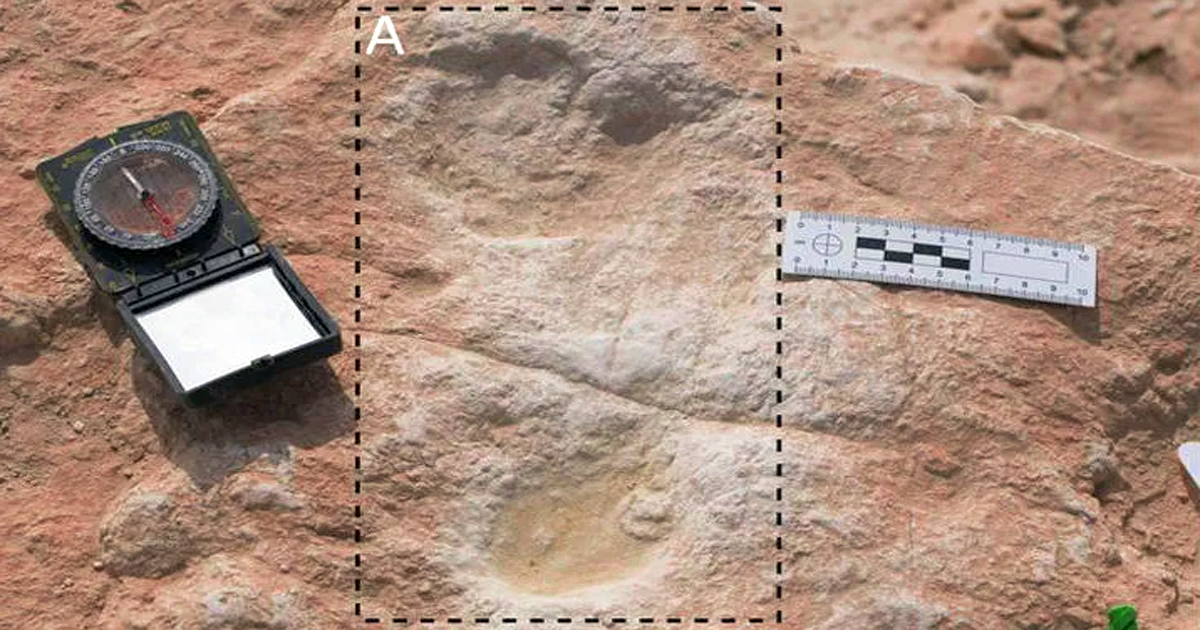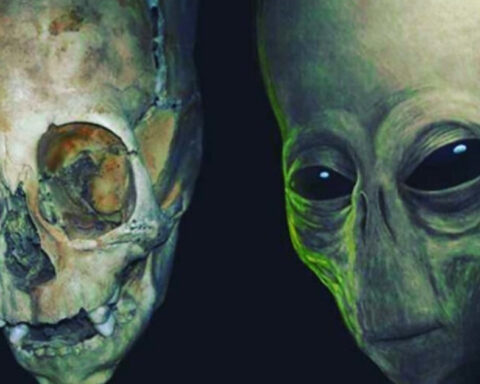Thanks to the discovery of 120,000-Year-Old Human Footprints in the An-Nafud desert that shed new light on the paths taken by our ancestors as they migrated out of Africa, this thorough scene has now been reconstructed.
120,000 years ago, a small party of Homo sapiens paused in what is now northern Saudi Arabia to drink and forage for food in a shallow lake frequented by numerous species.
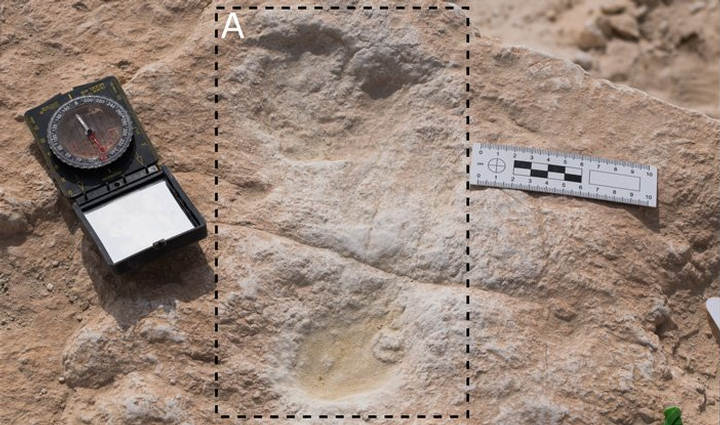
One of the human footprints that Alathar found.
The Arabian peninsula today is distinguished by its vast and arid deserts that would have been inhospitable for early humans and for the animals they were hunting.
But the analysis in recent decades has shown that this was not always the case; the region was much greener and wetter in the past, due to natural changes in temperature, in a time known as the last interglacial.
“The deserts that currently dominate the interior of the peninsula were transformed into vast areas of grasslands, lakes and rivers during certain times in the past,” explained study co-author Richard Clark-Wilson of the University of London’s Royal Holloway Department.
On the other hand, Mathew Stewart, lead author of the Max Planck Institute for Chemical Ecology, Germany, told AFP that the footprints were found after the depletion of the sediments covering the ancient lake called Alathar during his doctoral thesis in 2017. (in Arabic, ‘the trace’).
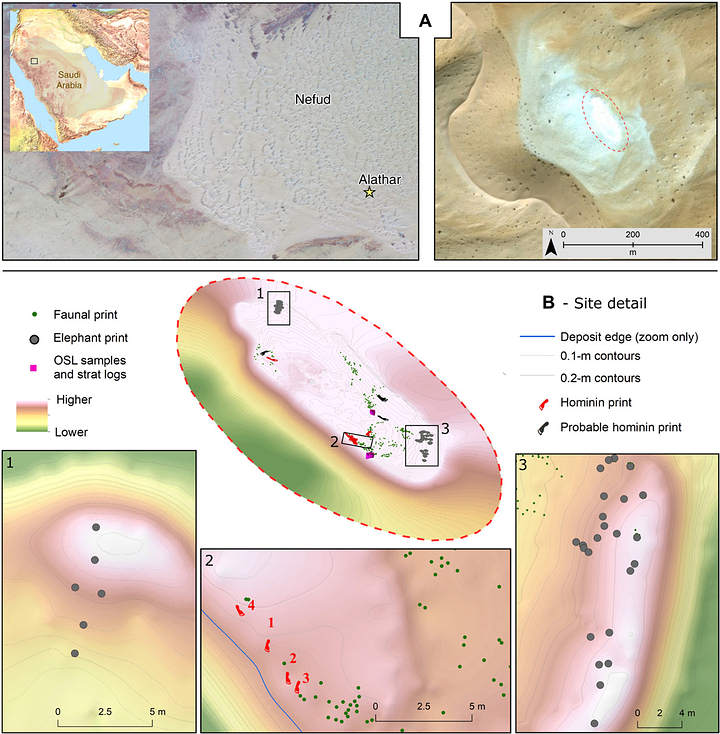
Footprints are a rare type of fossil proof that typically reflect a few hours or days, giving snapshots of the past. It’s a resolution we generally don’t receive from other registries,’ he added.
The 120,000-Year-Old Human Footprints were dated using a method known as optically induced luminescence in geomorphology, which helps us to establish how long ago mineral grains were last exposed to sunlight or enough heating in the sediments.
Using Arabia To Be Green
In particular, seven of the hundreds of tracks found were classified as hominids, including four that were perceived as two or three people moving together, given their common orientation, the distance between them, and size differences.
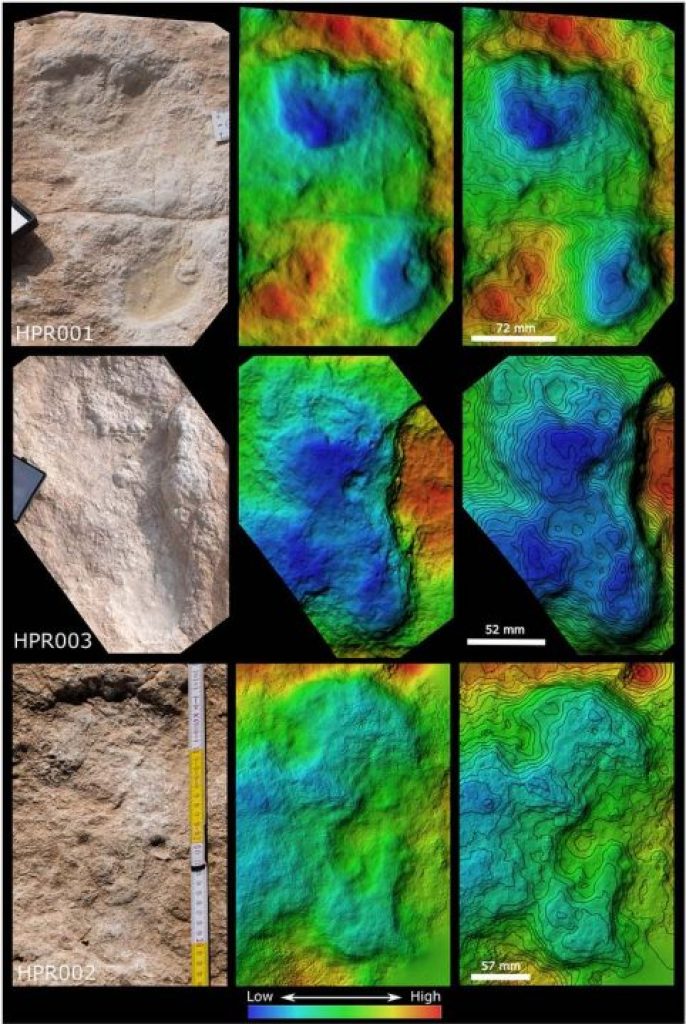
The researchers claim that on the grounds that our extinct cousins were not present in the Middle East region at the time, they belonged to modern humans and not Neanderthals. The approximate height and mass calculated from the footsteps further support the above.

“We know that at the same time as the animals people were entering this lake, presumably searching for water and food. “We found no stone tools, unusually for the area,” Stewart explained.
The team managed to retrieve some 233 fossils in addition to the footprints, which show that carnivores were drawn to Lake Alathar in search of herbivores, close to what we find today in the African savannas.
Source: Infinity Explorers

